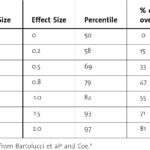Short-circuit evaluation is a crucial concept in programming, impacting how logical expressions are processed. This article delves into which JavaScript operators utilize this technique and how it affects code execution.
Understanding Short-Circuit Evaluation
Short-circuit evaluation, also known as minimal evaluation, is a strategy where the second argument in a logical expression is only executed or evaluated if the first argument does not suffice to determine the value of the expression. This means that:
- For
&&(AND) operator: If the left operand evaluates tofalse, the entire expression isfalse, and the right operand is not evaluated. - For
||(OR) operator: If the left operand evaluates totrue, the entire expression istrue, and the right operand is not evaluated.
This behavior can significantly impact performance and logic flow, especially when dealing with expressions that have side effects.
JavaScript Operators and Short-Circuit Evaluation
In JavaScript, the following operators employ short-circuit evaluation:
- Logical AND (
&&): If the left operand is falsy (evaluates tofalsein a boolean context), the right operand is not evaluated. - Logical OR (
||): If the left operand is truthy (evaluates totruein a boolean context), the right operand is not evaluated.
Let’s illustrate with examples:
let x = 0;
console.log(false && (x = 1)); // Output: false (x remains 0)
console.log(true || (x = 1)); // Output: true (x remains 0)In the first example, because false is falsy, (x = 1) is never executed, so x remains 0. In the second example, because true is truthy, (x = 1) is not executed, and x remains 0.
Other Comparison Operators
It’s important to note that comparison operators such as == (loose equality), === (strict equality), != (inequality), !== (strict inequality), <, >, <=, and >= do not utilize short-circuit evaluation. These operators always evaluate both operands before returning a result.
let y = 5;
let z = 10;
console.log( (y = 1) < z); //Output: true (y is now 1)
console.log( (y = 20) > z ); //Output: true (y is now 20)Even though the result of the comparison is clear after evaluating the first operand, the assignment (y=1) and (y=20) still occurs because both sides are evaluated.
Conclusion
Understanding which JavaScript operators employ short-circuit evaluation is essential for writing efficient and predictable code. The && and || operators leverage this technique, allowing for optimized logic and potential performance gains. Remember that other comparison operators always evaluate both operands, regardless of the outcome of the first evaluation. By understanding these nuances, you can harness the power of short-circuit evaluation to create more robust and effective JavaScript applications.
